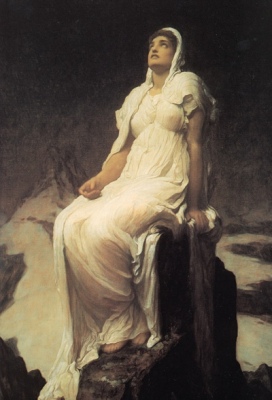| note♩: Runes - Wikipedia composed_by: morpheus |
|
| -this is a public scroll: anyone can see this scroll- |

Runes
are
the
letters
in
a
set
of
related
alphabets
known
as
runic
alphabets,
which
were
used
to
write
various
Germanic
languages
before
the
adoption
of
the
Latin
alphabet
and
for
specialised
purposes
thereafter.
The
Scandinavian
variants
are
also
known
as
futhark
or
fuþark
(derived
from
their
first
six
letters
of
the
alphabet:
F,
U,
Þ,
A,
R,
and
K);
the
Anglo-Saxon
variant
is
futhorc
or
fuþorc
(due
to
sound-changes
undergone
in
Old
English
by
the
names
of
those
six
letters).
-from, https://en.wikipedia.org/wiki/Runes
-from, https://en.wikipedia.org/wiki/Runes
☰
Runic magic - Wikipedia
by: morpheus

There
is
some
evidence
that,
in
addition
to
being
a
writing
system,
runes
historically
served
purposes
of
magic.
This
is
the
case
from
earliest
epigraphic
evidence
of
the
Roman
to
Germanic
Iron
Age,
with
non-linguistic
inscriptions
and
the
alu
word.
An
erilaz
appears
to
have
been
a
person
versed
in
runes,
including
their
magic
applications.
In medieval sources, notably the Poetic Edda, the Sigrdrífumál mentions "victory runes" to be carved on a sword, "some on the grasp and some on the inlay, and name Tyr twice."
In early modern and modern times, related folklore and superstition is recorded in the form of the Icelandic magical staves. In the early 20th century, Germanic mysticism coins new forms of "runic magic", some of which were continued or developed further by contemporary adherents of Germanic Neopaganism. Modern systems of
runic divination are based on Hermeticism, classical Occultism, and the I Ching.
-from, https://en.wikipedia.org/wiki/Runic_magic
In medieval sources, notably the Poetic Edda, the Sigrdrífumál mentions "victory runes" to be carved on a sword, "some on the grasp and some on the inlay, and name Tyr twice."
In early modern and modern times, related folklore and superstition is recorded in the form of the Icelandic magical staves. In the early 20th century, Germanic mysticism coins new forms of "runic magic", some of which were continued or developed further by contemporary adherents of Germanic Neopaganism. Modern systems of
runic divination are based on Hermeticism, classical Occultism, and the I Ching.
-from, https://en.wikipedia.org/wiki/Runic_magic
☰
Sigrdrífumál - Wikipedia
by: morpheus

Sigrdrífumál
(also
known
as
Brynhildarljóð[1])
is
the
conventional
title
given
to
a
section
of
the
Poetic
Edda
text
in
Codex
Regius.
It follows Fáfnismál without interruption, and it relates the meeting of Sigurðr with the valkyrie Brynhildr, here identified as Sigrdrífa ("driver to victory").[2]
Its content consists mostly of verses concerned with runic magic and general wisdom literature, presented as advice given by Sigrdrifa to Sigurd.
The metre is fornyrðislag, except for the first stanza.
The end is in the lost part of the manuscript but it has been substituted from younger paper manuscripts. The Völsunga saga describes the scene and contains some of the poem.
-from, https://en.wikipedia.org/wiki/Sigrdr%C3%ADfum%C3%A1l
It follows Fáfnismál without interruption, and it relates the meeting of Sigurðr with the valkyrie Brynhildr, here identified as Sigrdrífa ("driver to victory").[2]
Its content consists mostly of verses concerned with runic magic and general wisdom literature, presented as advice given by Sigrdrifa to Sigurd.
The metre is fornyrðislag, except for the first stanza.
The end is in the lost part of the manuscript but it has been substituted from younger paper manuscripts. The Völsunga saga describes the scene and contains some of the poem.
-from, https://en.wikipedia.org/wiki/Sigrdr%C3%ADfum%C3%A1l
☰
The Poetic Edda: Sigrdrifumol
by: morpheus

The
Poetic
Edda,
by
Henry
Adams
Bellows,
[1936],
at
sacred-texts.com
p.
386
The
so-called
Sigrdrifumol,
which
immediately
follows
the
Fafnismol
in
the
Codex
Regius
without
any
indication
of
a
break,
and
without
separate
title,
is
unquestionably
the
most
chaotic
of
all
the
poems
in
the
Eddic
collection.
The
end
of
it
has
been
entirely
lost,
for
the
fifth
folio
of
eight
sheets
is
missing
from
Regius,
the
gap
coming
after
the
first
line
of
stanza
29
of
this
poem.
That
stanza
has
been
completed,
and
eight
more
have
been
added,
from
much
later
paper
manuscripts,
but
even
so
the
conclusion
of
the
poem
is
in
obscurity.-from,
http://www.sacred-texts.com/neu/poe/poe25.htm
+ add a new chapter to this note +

